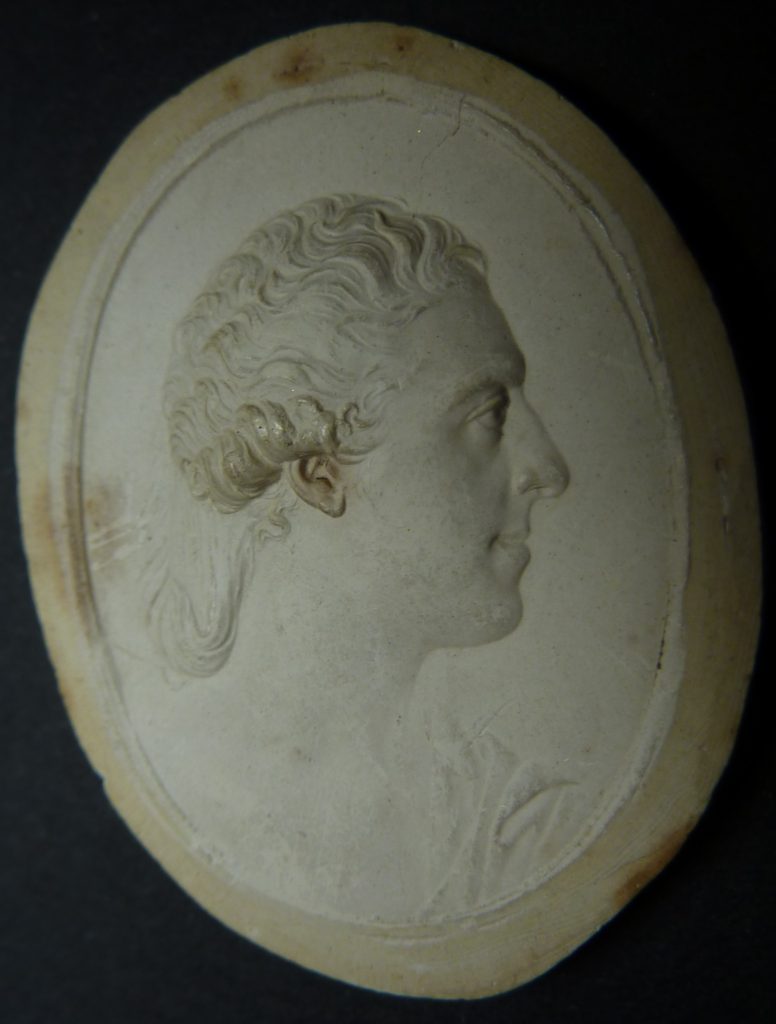
A while back my daughter presented me with a Christmas present which was a plaster cast of an intaglio gem of a bust of a man. It appeared to have some age on it, perhaps dating to the late 18th or 19th century. There was no wrapping as was common with many similar pieces from the Grand Tour period, but it was in relatively good condition. I, of course, was immediately curious about who the subject of the cast was, who produced it, and who the engraver of the original stone was. The investigation began.
The piece had been purchased on Ebay so it was easy to go online and find the original advertisement. The sellers statement – “This is part of an 1021 piece original James Tassie collection of intaglios, cameos and medallions that were acquired in November 1967 by Colby Antiques, (Edward Colby and Mary Elizabeth Colby Co-founder of Port O’ Call gift stores in Southern California), of which 81 pieces were purchased by the now owner.”
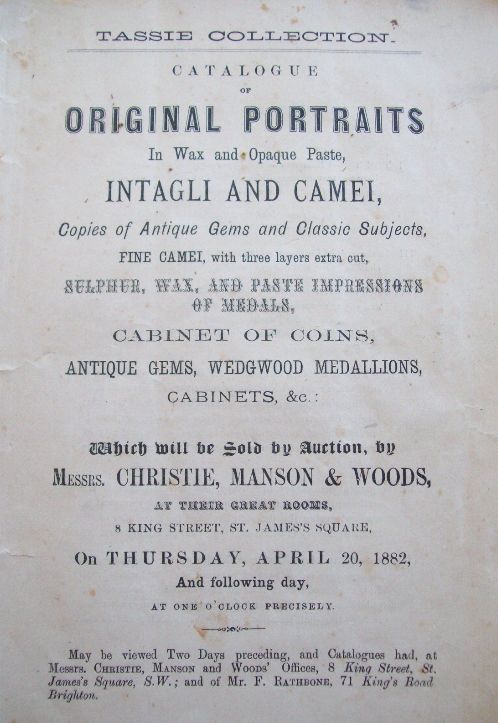
The advertisement included images of the original auction catalogue cover and certificate of authenticity. It would have been nice to have the page from the catalogue that listed the piece, but the plaster cast was almost certainly a cast by James Tassie. I found that – “James Tassie (1735–1799) was a Scottish gem engraver and modeler. He is remembered for a particular style of miniature medallion heads, portraying the profiles of the rich and famous of Britain, and for making and selling large numbers of “Tassie casts” of engraved gems for collectors.” (from Wikipedia https://en.wikipedia.org/wiki/James_Tassie ). He is the subject of a biography by John Miller Gray, “James and William Tassie A Biographical and Critical Sketch”, the full text of which is available at https://archive.org/details/jamesandwilliam00graygoog/page/n9 .
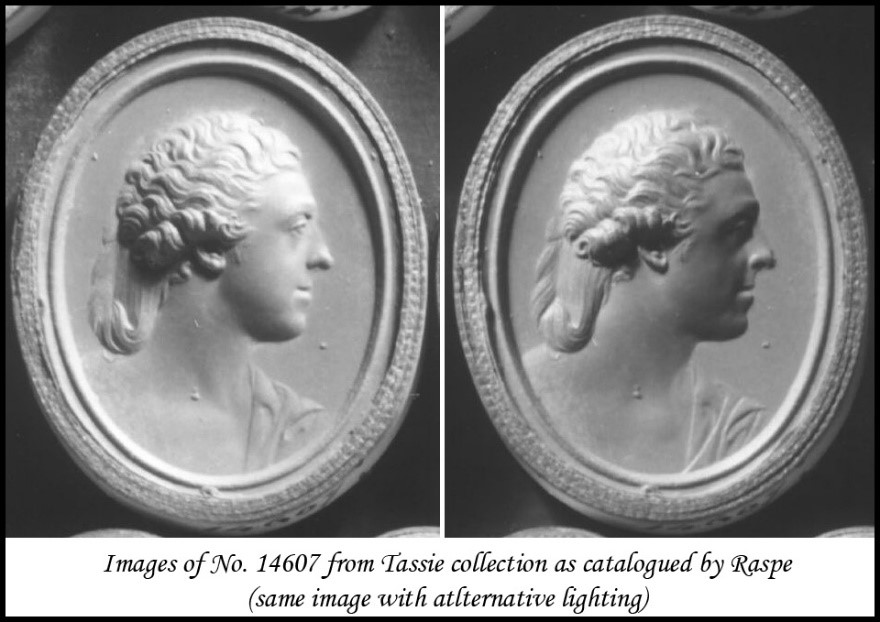
Further confirmation that the cast was a Tassie came when, while searching the online database of the Tassie collection available from the Gem Research people at the Classical Art Research Centre (CARC) at https://www.beazley.ox.ac.uk/gems/default.htm , I found an image of the same bust –
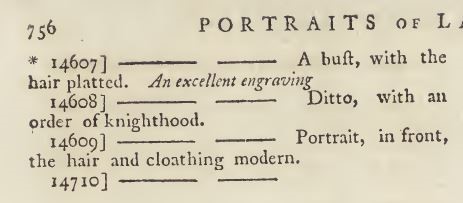
Regrettably, the accompanying entry in the Raspe Catalogue didn’t provide any further information. (An entry in the “Resources” page gives further information about use of this online database.)
As to the personage represented by the bust and who engraved it, I found, after removing a piece of felt from the back, the following written in pencil –
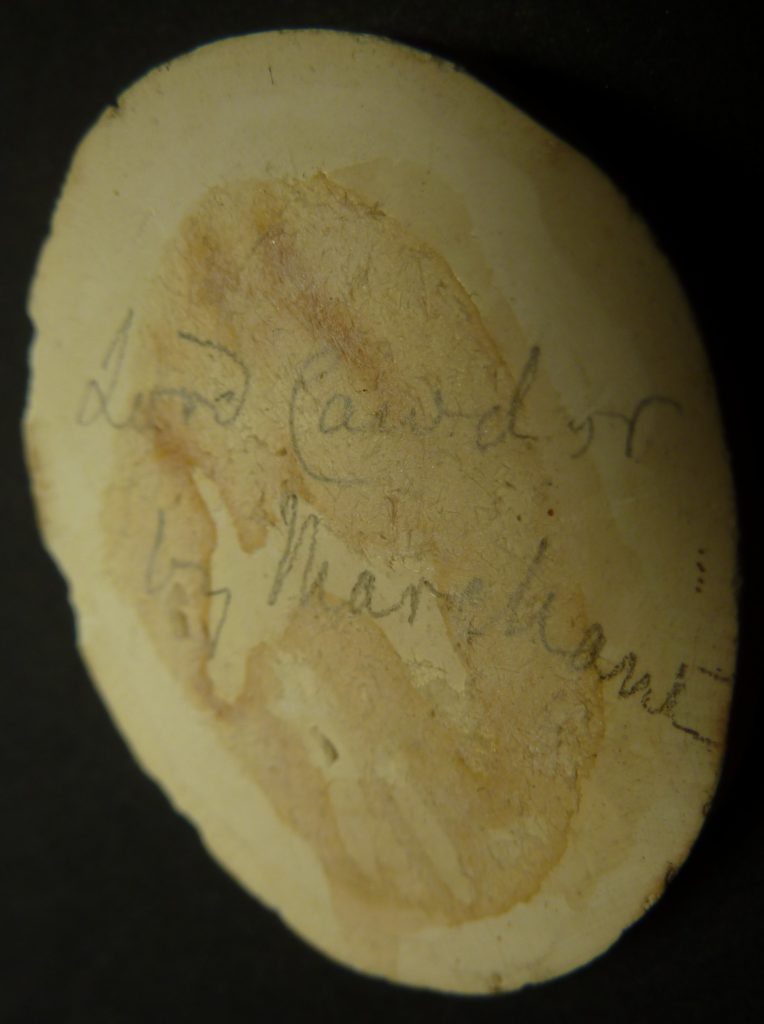
When looking at the image now, it clearly shows “Lord Cawdor”, however, when I first saw it, it looked more like “Lord Carodor” or “Lord Carvdon” or “Lord Caradon” or something similar. Several of these were, in fact, actual British lords, but which one was the one on the cast? I searched for each, but couldn’t definitively ID the bust – it would have to wait.
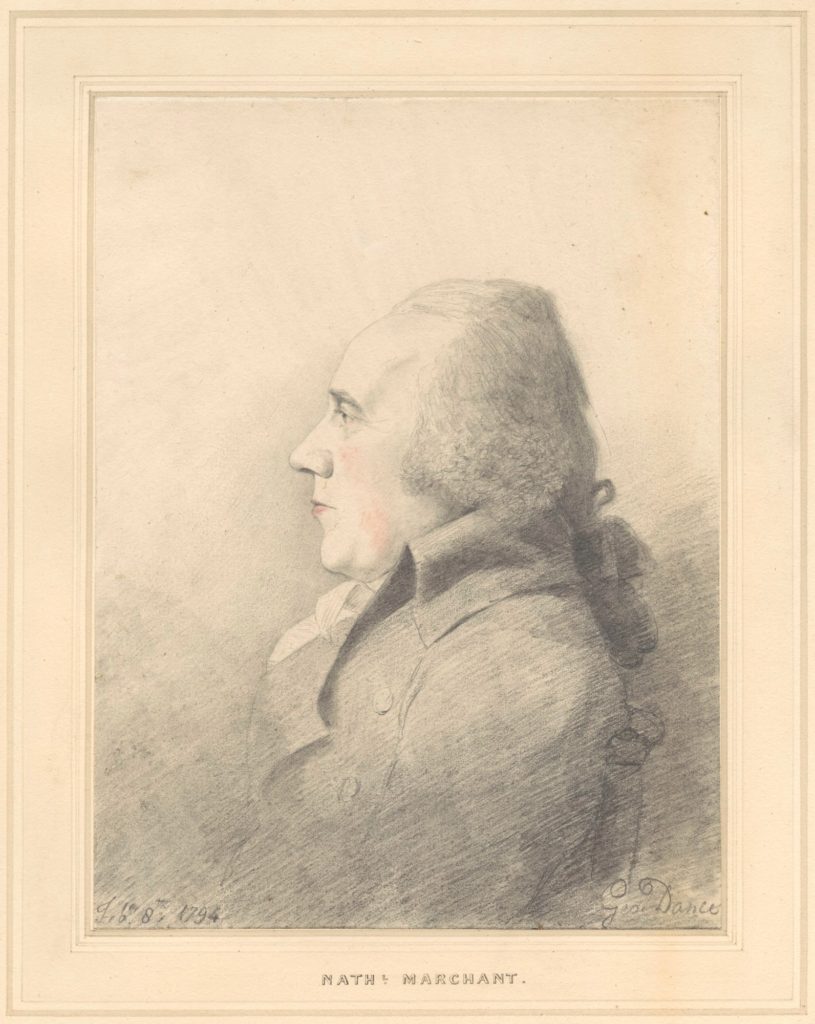
The writing on the back also indicated that the image was “by Marchant”. At the time, I wasn’t familiar with “Marchant”, but soon found that he was a famous British engraver who worked during the latter 18th and early 19th century. His bio was found on the British Museum site at https://www.britishmuseum.org/research/search_the_collection_database/term_details.aspx?bioId=83154 In part it reads, “Gem-engraver, antiquary and dealer, working in London and Rome. A pupil of Edward Burch (qv), Marchant was the foremost prizewinner of the Society of Arts competitions in intaglio engraving, winning four years running from 1761-64…. Many (intaglios) were taken from the antique, while others were adapted from celebrated paintings or were portraits of his contemporaries, especially his patrons.” (I later found that for several years, during the mid-1880’s, both Marchant and Lord Cawdor lived in Rome and were heavily involved in the contemporary art scene. It is very likely that they came to know each other at that time.)
I now knew everything about the plaster cast except who the subject was. I had ultimately come upon information about Lord Cawdor (John Campbell) and was relatively sure that he was the subject of the engraving, but I couldn’t confirm it as fact.
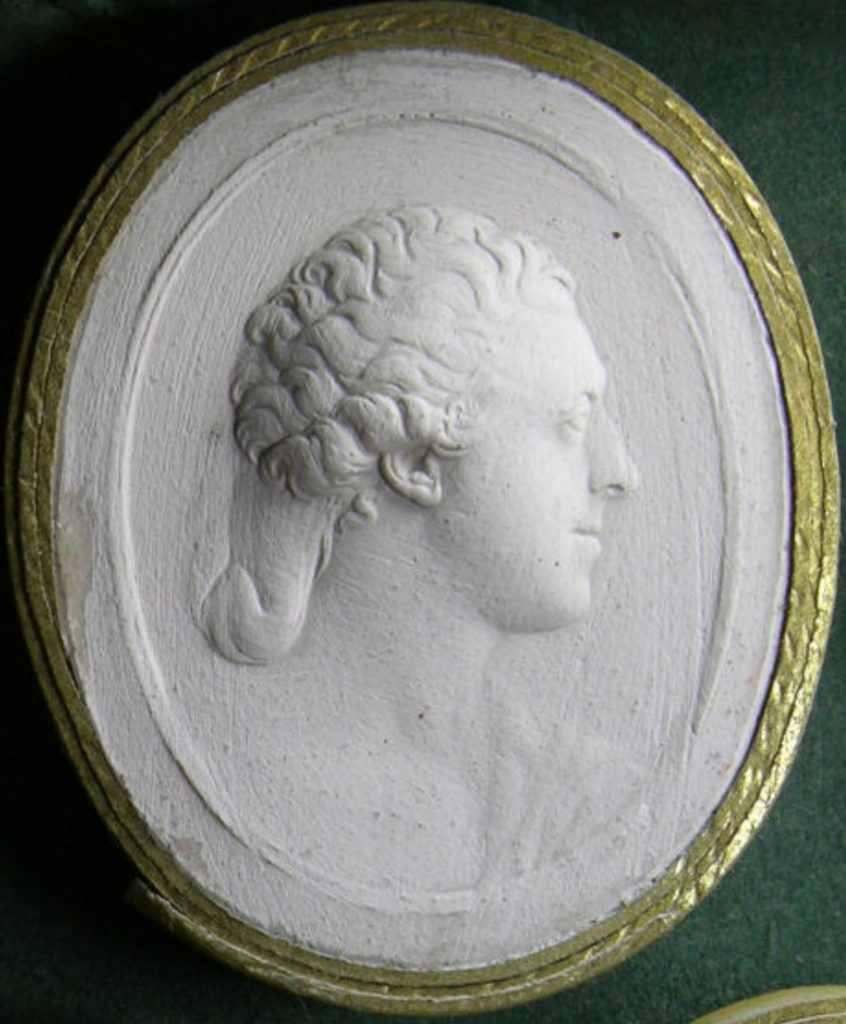
Not too long ago I was again perusing the CARC Beazley Archive website and came upon an image in the Amastini Marchant Collection at https://www.beazley.ox.ac.uk/gems/amastini/default.htm which was identified as a Marchant engraving AND a bust of Colonel John Campbell (Lord Cawdor).
Finally, the information about this one, small piece of plaster was complete. I sometimes wonder if the hunt isn’t more enjoyable than appreciation of the prey.
In summary, the plaster cast is a bust produced by James Tassie (probably around 1800) of an intaglio gem engraving of Colonel John Campbell (Lord Cawdor) modeled by Nathaniel Marchant probably in the late 18th century.
P.S.
I later discovered much more about Lord Cawdor in “’Nathaniel Marchant, Gem-engraver 1739-1816′, Walpole Society, vol. LIII, 1987, pp. 1-105. By G. Seidmann, It can be found and downloaded at https://www.jstor.org/stable/pdf/41829502.pdf
In the descriptions of various Marchant engraved gems, “Colonel John Campbell (later 1st Lord Cawdor)” is mentioned as an owner of several original Marchant pieces.
p.75
131 Colonel John Campbell, later Lord Cawdor (1755-1821), c. 1785-88 Fig. 134
Profile bust of a young man with drapery over one shoulder; his hair is dressed in contemporary fashion, waved over the crown of his head with a lock above his ear, the long hair at the back twisted and drawn up in the form of a ‘campaign wig’.
Unsigned.
‘Sardonyx’, 33 X 27.
Untraced.
The identification of the sitter of one of Marchant’s largest gems, reproduced in Raspe-Tassie 14606 [MyI: actual number is 14607] among ‘modern unknown heads’, rests on the entries in Amastini B I/3 and Amastini II A II/9 as ‘Colonello Campell’. It is supported by Campbell’s commissions from Marchant of three gems reproduced in 100 Impressions ; another, for Lady Charlotte Campbell, was a copy of a relief owned by him, see Head of a female Figure deco-rating a Temple ‘ (54). By 30 August 1788 he had returned to London: Flaxman writes in a letter from Rome to his parents, ‘I shall desire Marchant to present my respects to Colonel Campbell and to desire him if he wants any of the plaisters he brought to England, moulded, to let you do them’ (British Library Add. MS 39,780, f. 4$). In correspondence between England and Italy, there are several references linking the two men. Campbell married a daughter of the 5th Lord Carlisle, one of the artist’s powerful patrons.
And on page 40:
“…John Campbell (later the first Lord Cawdor) who also sat to Marchant for his portrait. He was an important collector and lavish patron, much noticed in Rome 1785-88, and returned to England a few months before Marchant, who cut several gems for him. He had political ties with the artist’s powerful Whig patrons and married a daughter of the 5 th Earl of Carlisle the year after his return from Rome.”